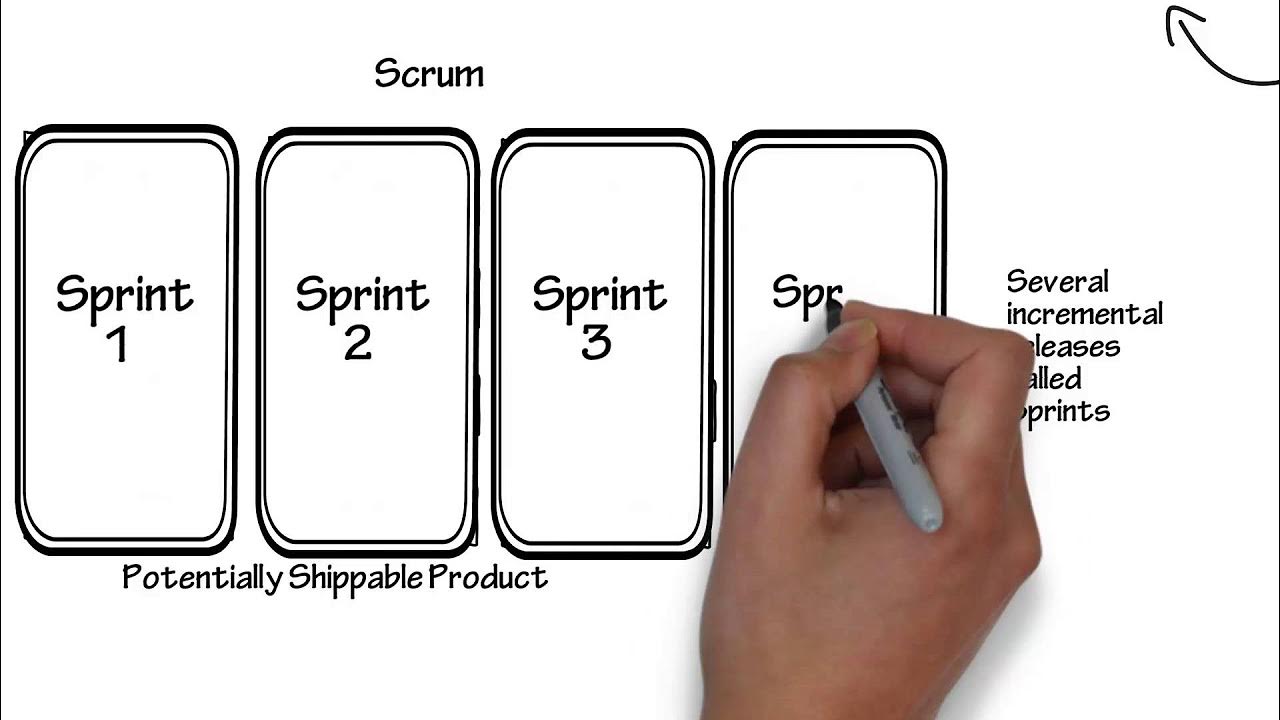Software Testing Tutorial #24 - Regression Testing in Agile Development
Summary
TLDRThis tutorial explains regression testing within an agile development approach, particularly in a Scrum framework. It highlights the challenges of manual regression testing across multiple sprints as the number of test cases grows. The solution suggested is automating regression testing by identifying key test cases and building an automated regression suite throughout the development process. Tools like Selenium for UI automation or API-level automation tools are recommended to efficiently manage regression testing in agile projects, ensuring that previous functionalities remain intact as new features are introduced.
Takeaways
- 💡 Regression testing ensures that existing functionality continues to work after new code or features are added.
- ⚙️ In agile development, specifically Scrum, the project is divided into sprints, typically lasting 2-4 weeks.
- 📋 User stories, which represent the project requirements, are assigned to each sprint for development and testing.
- 🧪 Testers write test cases for each user story and test the functionality based on the acceptance criteria during the sprint.
- 🔄 Regression testing ensures that code changes or additions do not break previously working functionalities.
- 🚧 Manual regression testing becomes increasingly challenging with each sprint due to the growing number of test cases.
- 🤖 Automation is a key solution for handling regression testing in agile projects to save time and ensure accuracy.
- ✅ Test cases are prioritized and marked as regression candidates based on their importance and usage frequency.
- 🔧 Automated regression suites are built gradually, sprint by sprint, reducing the need for manual testing.
- 🛠️ Tools like Selenium and API-level testing tools can be used for automating both UI and API regression tests.
Q & A
What is regression testing, and how is it different from retesting?
-Regression testing ensures that existing functionality continues to work after code changes, while retesting focuses on verifying if specific defects or issues have been fixed. Retesting is part of regression testing but they serve different purposes.
What is the main challenge of performing regression testing in an agile development approach?
-The primary challenge is that with each sprint, the number of test cases grows, making manual regression testing increasingly time-consuming and unfeasible, especially with short development cycles like 2-week sprints in Scrum.
How are test cases organized in Scrum for each sprint?
-Test cases are organized based on user stories, which define specific functionalities or requirements. Each user story has acceptance criteria and corresponding test cases, which are tested during the sprint to ensure functionality is as expected.
Why is manual regression testing difficult to manage in agile projects?
-Manual regression testing becomes difficult in agile projects because, as more sprints are completed, the number of test cases that need to be re-executed continues to grow. This makes it unfeasible to manually test all cases without significantly increasing the team size.
How can automation help with regression testing in agile projects?
-Automation helps by reducing the manual effort required to re-execute test cases. As each sprint progresses, test cases marked as critical for regression are automated, allowing them to be quickly executed in future sprints, saving time and resources.
What criteria should be used to select test cases for automation in regression testing?
-Test cases should be selected for automation based on their importance, frequency of use, and impact on the project. It’s essential to prioritize which test cases are most critical, rather than automating all test cases, to build an efficient regression test suite.
What is the role of user stories in agile testing?
-User stories in agile testing define the requirements and functionalities that need to be implemented. Each user story includes acceptance criteria, which are used to create corresponding test cases. These stories guide the development and testing processes in each sprint.
How does automation benefit the team in future sprints?
-By automating test cases in each sprint, the team can run automated regression tests in future sprints without having to manually re-execute test cases. This increases efficiency and allows the team to focus on testing new functionalities rather than re-testing existing ones.
What tools are typically used for regression test automation?
-Common tools used for regression test automation include Selenium for UI testing and various API testing tools. These tools allow teams to automate repetitive test cases and ensure that previously tested functionalities continue to work after code changes.
What is the importance of identifying regression test candidates during sprints?
-Identifying regression test candidates during sprints ensures that only the most critical and relevant test cases are included in the regression suite. This prioritization is crucial for managing the increasing number of test cases over multiple sprints and avoiding unnecessary automation.
Outlines

This section is available to paid users only. Please upgrade to access this part.
Upgrade NowMindmap

This section is available to paid users only. Please upgrade to access this part.
Upgrade NowKeywords

This section is available to paid users only. Please upgrade to access this part.
Upgrade NowHighlights

This section is available to paid users only. Please upgrade to access this part.
Upgrade NowTranscripts

This section is available to paid users only. Please upgrade to access this part.
Upgrade NowBrowse More Related Video

Scrum vs Agile: Key Differences Simplified! 🚀 | KnowledgeHut

Scrum Explained in Hindi l Software Engineering and Project Management Course

Introduction to Scrum - 7 Minutes

TERBARU - Materi & Soal SKB Penata Kelola Sistem dan TI - Pengembangan Agile & Metodologi SCRUM

SCRUM vs SAFe : What's the difference? How are they related?

Agile business transformation: what it takes to succeed | Joe Justice | TEDxSeattleSalon
5.0 / 5 (0 votes)